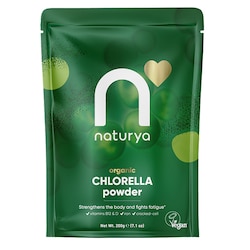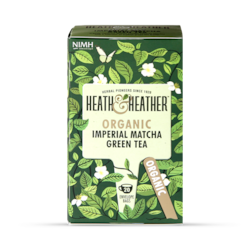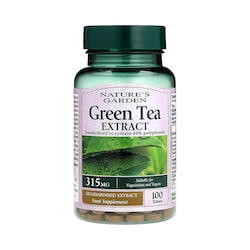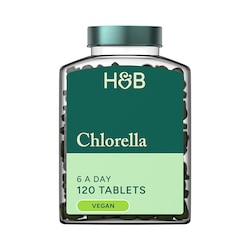20% off £30
Code:QUICK
Your guide to chlorophyll

This green pigment sustains all plant life, and it may hold impressive health benefits for us humans, too. Read on to discover how chlorophyll can help with everything from weight loss to clearer skin.
Summary
1What is chlorophyll used for?
Chlorophyll is commonly used in tablet, drop, liquid or cream form to help heal skin conditions such as acne, aid with weight loss, boost support...
2What does chlorophyll do?
Chlorophyll is vital to plant life, and therefore life on earth. But we can’t help but wonder what extra health benefits it can offer us. Here...
3When should I take chlorophyll?
Chlorophyll can either be taken with meals, or on an empty stomach. Different varieties, strengths and types of chlorophyll come with different...
Chlorophyll is sometimes referred to as ‘the lifeblood of plants’.
This name is fitting, as, without chlorophyll, plants can’t make energy from sunlight and would die.
Chlorophyll is a major buzzword in human health, too. But why?
Read on to discover the function of chlorophyll, why it benefits us humans, how to take it, and any side effects you should be aware of.
What is chlorophyll?
You might remember learning about chlorophyll in school science lessons. In case that’s now a distant memory - here’s a quick refresher.
Chlorophyll is a green pigment found in plants. It’s what makes them green – plants also use it for photosynthesis, the process by which plants create energy from sunlight.1
As a vital component in sustaining plant life, chlorophyll helps produce oxygen for the entire planet!2
Amazingly, facilitating life-giving oxygen isn’t the only way chlorophyll can help enrich our health.

Chlorophyll contains phytonutrients – plant chemicals which can help protect the cells of our bodies through antioxidant and anti-inflammatory activity.3
In recent years, chlorophyll liquid, chlorophyll drops and chlorophyll powder have become a wellness trend, with drinking chlorophyll in particular being touted on social media as a fast-track to clear skin.
Here, we take a look at some of the benefits of chlorophyll – and what the evidence says about each one.
What is chlorophyll used for?
Chlorophyll is commonly used in tablet, drop, liquid or cream form to help heal skin conditions such as acne, aid with weight loss, boost support energy and digestion, ease gut health issues or promote better all-round health.
Summary
- Chlorophyll is a richly-hued green pigment found in all plants
- It’s what enables plants to convert sunlight into food and energy
- Thanks to the phytonutrients it contains, chlorophyll could be beneficial to human health
What does chlorophyll do?
Chlorophyll is vital to plant life, and therefore life on earth. But we can’t help but wonder what extra health benefits it can offer us.
Here, we look at ten science-backed benefits of chlorophyll for human health.
10 benefits of chlorophyll
A study found that taking a 5g green plant membrane supplementation (which included chlorophyll) for 90 days led to weight loss.4
Taking the green plant supplement reduced the participants’ cravings for sweets and chocolate, which could partially explain the weight loss effects seen in the study.
Another finding was that taking the chlorophyll supplement increased feelings of satisfaction and fullness by releasing a gut hormone which tells the brain it has had enough.5
Chlorophyll has a similar chemical makeup to haemoglobin, the substance in red blood cells which carries oxygen around the body.
It’s been theorised that due to its chemical similarity to haemoglobin, chlorophyll can mimic haemoglobin in our bodies, helping rebuild our red blood cells and enabling them to carry more oxygen around the body.6 This has the benefit of boosting giving us our energy.
wounds
Chlorophyllin (a semi-synthetic chlorophyll derivative which includes copper – commonly used in chlorophyll supplements) can promote and accelerate wound healing. This has been proven in several studies.8
It’s thought this is due to its ability to stimulate cell production, which is essential to heal skin following damage.9 Another mechanism thought to support wound healing is by limiting harmful bacterial growth which can slow the speed at which a wound heals.10
Chlorophyll is able to slow and prevent the growth of various types of bacteria that may be harmful to health.
This antibacterial action was confirmed during studies on different bacteria strains in the 1950’s.11
More recent studies have also demonstrated chlorophyll’s antibacterial action against various microbes.12
Perhaps the most well-known potential chlorophyll benefit is a clearer complexion, but can you sip your way to glowing skin with chlorophyll?
Due to its antibacterial properties, chlorophyll can help fight breakouts and other bacterial skin concerns when applied topically.13
Chlorophyll also holds soothing properties. Sensitive skin is a key cause of premature skin ageing, so it makes sense that anything which has soothing properties is good news for your skin.14
But what about the online trend of starting the day with a glass of liquid chlorophyll?
More research is needed on whether drinking liquid chlorophyll can help clear the skin from within – although remember that countless skin-loving foods such as spinach, spring greens, kale and cabbage are high in chlorophyll, so there’s method in the madness.15
‘Antioxidant’ is a buzzword in health and wellness, and anything with proven antioxidant properties is worth our attention.
Antioxidants work by scavenging oxidants, also known as free radicals. These are cell-damaging molecules which lead to disease and premature ageing.
In studies, chlorophyll has shown to be an effective antioxidant, able to neutralise several harmful oxidants.16
Chlorophyll might be able to help regulate our intestinal microbiome – the colony of bacteria which we all have in our gut.17
This is great news for our overall health, as we rely on a balanced population of gut bacteria for everything from good digestion to a balanced mood.18
When taken orally, chlorophyll might be able to prevent strong and unpleasant body odours.
This interesting effect of ingesting chlorophyll has been known to the medical community for decades, but definitive research was lacking.
Then, in 1980, a study on residents of a care home for the elderly confirmed it. Taking chlorophyllin tablets was found to be helpful in controlling body and faecal odours in the 62 residents.19
It’s thought that chlorophyll may also help neutralise bad breath, although definitive studies are lacking.
Chlorophyll is able to help relieve chronic constipation in sedentary people. One study on residents in a care home found that chlorophyll tablets had the effect of softening stools and preventing excessive flatulence among residents.20
A 2014 study on the effects of chlorophyll on weight loss found that taking daily chlorophyll also had a positive effect on cholesterol levels in overweight women.21
Within three weeks of starting treatment, levels of LDL (‘bad’) cholesterol reduced across the group.
Summary
- Chlorophyll has shown in studies to be able to reduce cravings for ‘bad’ foods and lead to weight loss
- Chlorophyll has beneficial effects in gut health, as well as antibacterial properties
- It could help soften stools as well as reducing unpleasant odours
Is chlorophyll good for humans?
Chlorophyll isn’t essential for humans the way it is for plants.
However, the human body can still benefit from the green goodness of chlorophyll.
The phytonutrients contained in chlorophyll have potential antioxidant and anti-inflammatory properties, both of which can help reduce oxidative stress on our cells, and in turn fight diseases and premature ageing.22
Where can I find chlorophyll?

1. Liquid chlorophyll
Liquid chlorophyll contains either pure plant extract (extracted from green vegetables or herbs) or a semi-synthetic chlorophyll derivative called chlorophyllin.
Chlorophyllin is often used in place of pure chlorophyll as it’s thought that pure chlorophyll extract isn’t properly absorbed as it breaks down too easily in the gut. Chlorophyllin contains copper which is thought to aid absorption into the body.23
Chlorophyll liquid usually includes mostly purified water to dilute the potent extract.

2. Chlorophyll tablets
Chlorophyll tablets usually contain chlorophyllin – the semi-synthetic version of chlorophyll.
Chlorophyll tablets may also be made of a phytonutrient-dense plant, such as the single-celled microalgae chlorella which is rich in chlorophyll.

3. Chlorophyll drops
Chlorophyll drops (again – more likely to be the better-absorbing chlorophyllin) are a concentrated form of liquid chlorophyll.
You can make your own chlorophyll drinks using the drops. Using a pipette or dropper included in the bottle, you add a couple of drops of the bright green concentrate to your own drink – whether that’s water, fruit juice or herb tea.
4. Plants
As the most abundant pigment found in plants, it’s no surprise that chlorophyll is found in many different fruits and vegetables.24 Chlorophyll concentration is highest in bright or dark green plant foods.

Food sources of chlorophyll include:25
- Spinach Kale
- Spring greens
- Bok choi
- Algae, such as spirulina, chlorella and sea kelp

5. Skincare
As chlorophyll is known for its antibacterial and wound-healing benefits, it’s probably no surprise that you can find it in skincare.26
Chlorophyll creams, gels and treatment masks are available which offer benefits against breakouts and skin blemishes.

6. Chlorophyll powder
Phytonutrient-rich green algae powder, such as chlorella, is high in chlorophyll as well as vitamins such as vitamin A, vitamin C, vitamin B12 and vitamin E.27
This powder can be added to water, juices and smoothies, as well as sprinkled over both sweet and savoury dishes from salads to overnight chia puddings.
How much chlorophyll can I take a day?
Dosage
There is no set dose for the amount of chlorophyll you should take per day. Doses and levels of concentration vary widely from product to product.
The dose for chlorella tablets (which are rich in chlorophyll) is 3000mg daily.28
Always follow the instructions on the label.
Possible side effects of chlorophyll
When taken orally, gastrointestinal side effects are possible. This includes diarrhoea, gas and stomach cramps.
You may also experience discolouration of the faeces (yes, we’re talking about green poo!) or discoloured urine, as well as discolouration of the tongue.29
When applied topically to the skin, chlorophyllin may cause a burning or itching sensation, especially on wounds or broken skin.
We recommend you consult with a dermatologist or healthcare professional before using new ingredients on your skin.
Safety
Neither chlorophyll nor chlorophyllin supplements have been tested for use during pregnancy or breastfeeding, so their safety cannot be guaranteed.
As a result, you should seek medical advice before taking chlorophyll while pregnant or breastfeeding.

When should I take chlorophyll?
Chlorophyll can either be taken with meals, or on an empty stomach.30,31 Different varieties, strengths and types of chlorophyll come with different recommendations, so always check the label.
Introduce chlorophyll slowly at the lowest suggested dose to minimise potential side effects.
Summary
- Chlorophyll is usually in the form of chlorophyllin, a semi-synthetic version of chlorophyll which is thought to absorb more easily into the body
- Chlorophyll is available in liquid form, as well as drops, powders, tablets and in gels and creams for topical application
- Side effects of chlorophyll may include digestive upset, as well as skin irritation when applied topically
- Chlorophyll (sciencedaily.com)
- Chlorophyll | National Geographic Society
- What Are Phytonutrients? | Live Science
- Body weight loss, reduced urge for palatable food and increased release of GLP-1 through daily supplementation with green-plant membranes for three months in overweight women - ScienceDirect
- Body weight loss, reduced urge for palatable food and increased release of GLP-1 through daily supplementation with green-plant membranes for three months in overweight women - ScienceDirect
- Hemoglobin vs Chlorophyll | Cascade, GA Patch
- Enzymatic Debriding Agents: An Evaluation of the Medical Literature | Wound Management & Prevention (o-wm.com)
- Chlorophyllin—A Healer?A Hypothesis for its Activity | Wounds Research
- CHLOROPHYLL THERAPY AND ITS RELATION TO PATHOGENIC BACTERIA on JSTOR
- The Antibacterial Activity of Chlorophyll (nih.gov)
- Chlorophyll and Chlorophyll Derivatives Interfere with Multi-Drug Resistant Cancer Cells and Bacteria (nih.gov)
- Article - JDDonline - Journal of Drugs in Dermatology
- Chlorophyll Revisited: Anti-inflammatory Activities of Chlorophyll a and Inhibition of Expression of TNF-α Gene by the Same | SpringerLink
- Chlorophyll Revisited: Anti-inflammatory Activities of Chlorophyll a and Inhibition of Expression of TNF-α Gene by the Same | SpringerLink
- Chlorophyllin as an effective antioxidant against membrane damage in vitro and ex vivo - PubMed (nih.gov)
- Chlorophyllin Modulates Gut Microbiota and Inhibits Intestinal Inflammation to Ameliorate Hepatic Fibrosis in Mice (nih.gov)
- The importance of gut health - Nutritionist Resource (nutritionist-resource.org.uk)
- Use of chlorophyllin in the care of geriatric patients - PubMed (nih.gov)
- Use of chlorophyllin in the care of geriatric patients - PubMed (nih.gov)
- Body weight loss, reduced urge for palatable food and increased release of GLP-1 through daily supplementation with green-plant membranes for three months in overweight women - ScienceDirect
- Role of antioxidants in the skin: Anti-aging effects - ScienceDirect
- Chlorophyll and Chlorophyllin | Linus Pauling Institute | Oregon State University
- Chlorophyll - an overview | ScienceDirect Topics
- Exploring the Effects of a High Chlorophyll Dietary Intervention to Reduce Colon Cancer Risk in Adults - Full Text View - ClinicalTrials.gov
- Article - JDDonline - Journal of Drugs in Dermatology
- Naturya Organic Chlorella Powder | Holland & Barrett (hollandandbarrett.com)
- Chinese Chlorella Tablets | Vegan | Holland & Barrett (hollandandbarrett.com)
- Chlorophyll and Chlorophyllin | Linus Pauling Institute | Oregon State University
- Chinese Chlorella Tablets | Vegan | Holland & Barrett (hollandandbarrett.com)
- KIKI Health Liquid Chlorophyll | Holland & Barrett (hollandandbarrett.com)
The advice in this article is for information only and should not replace medical care. Please check with your GP or healthcare professional before trying any supplements, treatments or remedies. Food supplements must not be used as a substitute for a varied and balanced diet and a healthy lifestyle.
Last updated: 27 May 2022



































